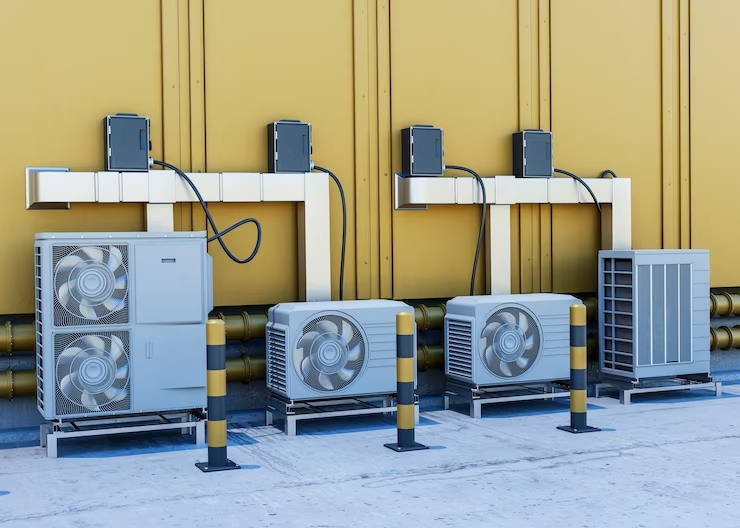
What Is a Heating and Cooling System? Exploring the Function and Components of HVAC Systems
Have you ever experienced the comforting embrace of a warm and cozy room? Or perhaps walked into a space that feels as chilly and refreshing as an igloo? Regardless of your personal preference, it is undeniable that heating and cooling systems play a significant role in our daily lives. HVAC, or heating, ventilation, and air conditioning system’s primary function is to create a pleasant indoor setting by effectively managing the temperature. Simultaneously, this system aids in sustaining excellent indoor air quality by facilitating sufficient ventilation and optimal air circulation. But what makes up these systems? Here, with the help of an American Standard Dealer, we’ll explore the different components of HVAC systems and their functions.
Air Filters
Within HVAC systems, air filters hold immense significance due to their pivotal function in ensuring the proper flow of uncontaminated air during all stages involved. To uphold a clean and agreeable indoor environment, it becomes critical to prioritize the utilization of air filters as they proficiently capture various airborne particles, including pollen, pollution, and dirt. The use of foam or paper-like materials in constructing these filters enables their reuse after being thoroughly cleaned.
Ductwork
Ductwork made from metal or fiberglass serves as an indispensable conduit connecting the heating and cooling system with various spaces within your home or building. When designed and installed appropriately, these channels enable efficient temperature control and energy conservation. Moreover, they reduce indoor air pollution by circulating fresh air throughout your space. Whether you seek to regulate indoor temperature, manage humidity levels, or enhance air quality, well-maintained ductwork is instrumental in creating a comfortable and healthy living environment.
Thermostat
The thermostat is the conductor of the ever-changing symphony that is your HVAC system. It’s the brain behind maintaining optimal temperature levels, ensuring the comfort of your humble abode. As the control center, the thermostat puts on a show – turning the HVAC system on and off as needed and pulling the right levers to bring harmony to the temperature. Located centrally, it manages the temperature of multiple rooms, with sensors working hard to relay accurate information. In short, your thermostat is the wizard behind the curtain, making the magic happen.
Furnace or Heat Pump
The furnace or heat pump is the powerhouse responsible for keeping you cozy in winter and breezy in summer. Nestled in the basement, attic, or crawlspace, it works hard to pump out warmth or cool breezes at the touch of a button. Through a network of ducts, it delivers comfortable temperatures throughout your humble abode. A true wonder of engineering, the furnace is your best friend when temperatures drop and your reliable ally during summer’s heat waves.
Evaporator and Condenser Coil
The evaporator coil cools the indoor air by absorbing heat and moisture. It works with the condenser coil to regulate temperature for optimal indoor comfort. Additionally, the evaporator coil plays a crucial role in dehumidifying indoor air, creating a pleasant atmosphere without the discomfort of dampness. On the other hand, the condenser coil provides warmth during colder months, ensuring year-round comfort in indoor spaces. HVAC operations would not be as efficient or effective without these essential coils.
Air Ducts and Vents
The primary function of these components revolves around channeling airflow across various system elements. However, in instances where the ductwork fails to receive adequate attention, significant drawbacks arise that directly impact overall performance quality. Problems such as heightened noise levels along with compromised air quality then ensue as a result.
Moreover, leaks can produce off-putting odors and promote undesired moisture buildup. To mitigate such issues effectively, specialists advocate for integrating specialized air filters directly into ventilation structures, preemptively addressing potential hazards associated with reduced indoor air quality levels.
Investing in high-quality air ducts and vents significantly improves the overall functionality of HVAC systems by ensuring optimal airflow that is both fresh and contaminant free.
Capacitors
Operating as voltage stabilizers, they skillfully prevent harmful energy surges from compromising the well-being of your precious HVAC equipment. To categorize them aptly, there are two types: start capacitors and run capacitors. Start capacitors facilitate those vital initial steps in cooling cycles for air conditioners by providentially supplying a momentous power boost during startup routines. Conversely, run capacitors continue their harmonious rotation through regulated access to stored energy. Failure of either capacitor can cause significant damage and lead to expensive repairs.
A heating and cooling system ensures comfortable indoor temperature levels and plays a crucial role in maintaining healthy living conditions. The intricate components that makeup HVAC systems work harmoniously to provide the desired climate control. Each part plays a vital role, from the air filters that ensure clean, breathable air to the thermostats that regulate temperature levels. Whether you’re a homeowner or a business owner, investing in a reliable heating and cooling system is a wise decision that guarantees lasting comfort and peace of mind.



